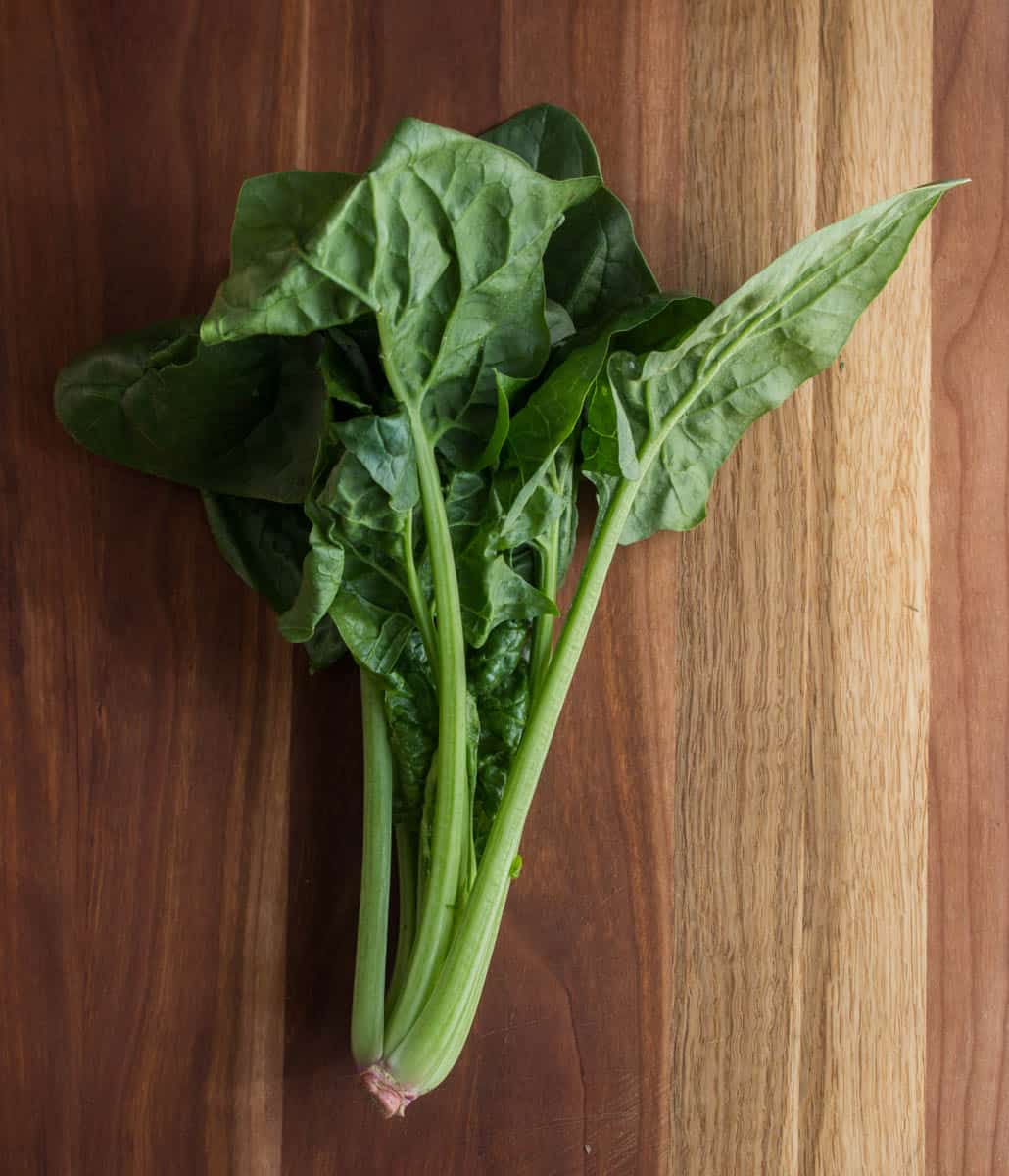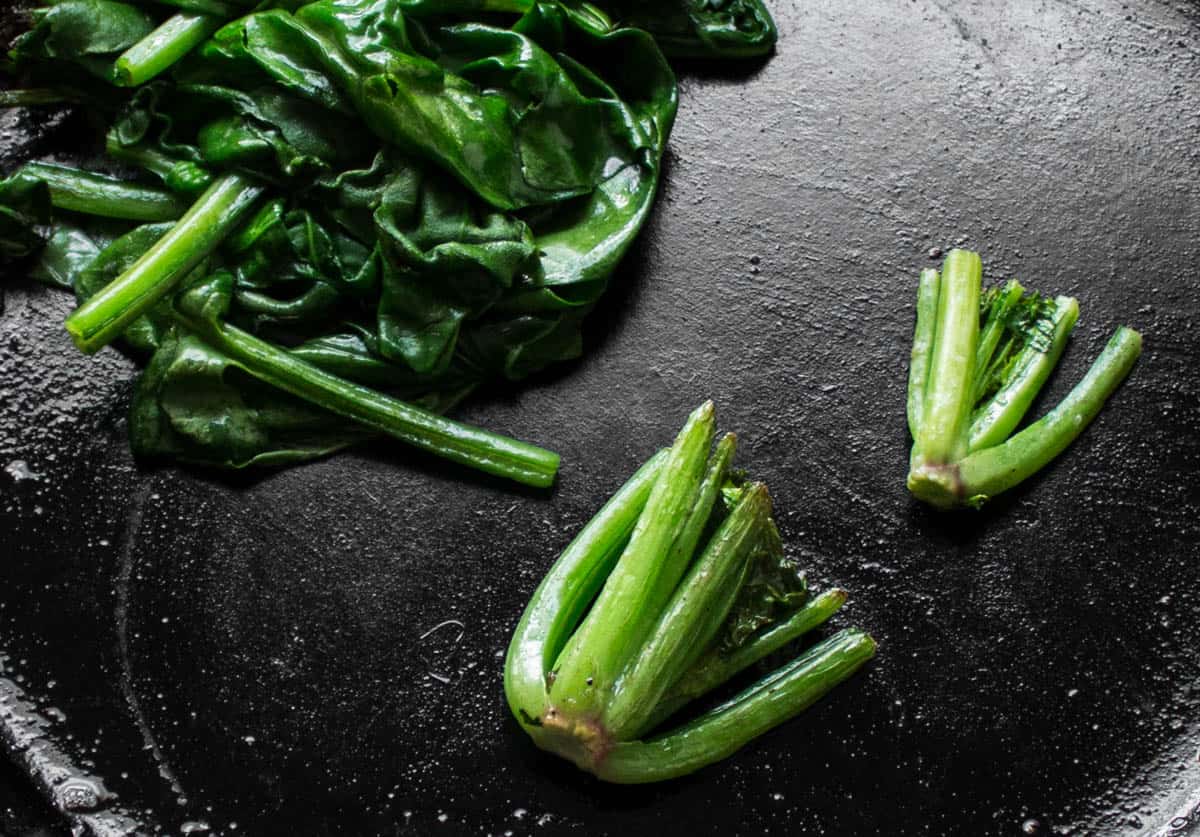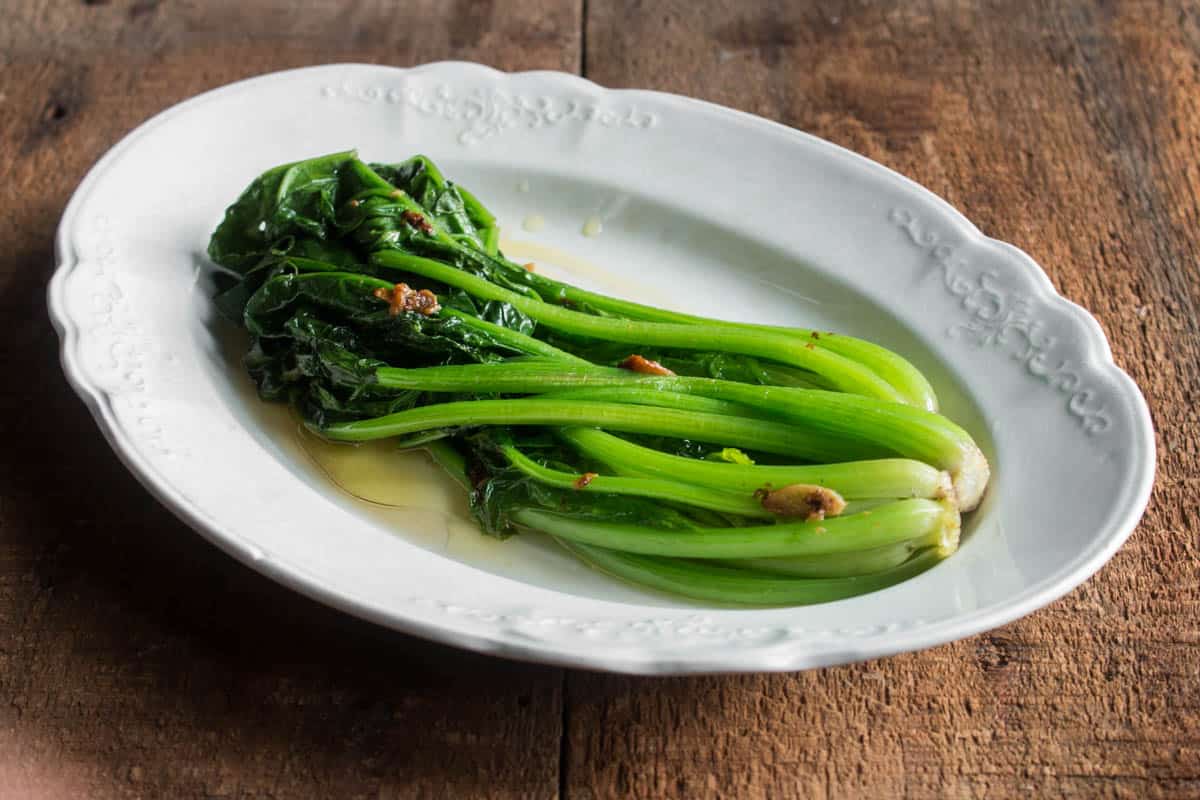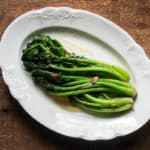Spinach is more than leaves. Read on and I'll explain how we cook with the whole plant, stems, leaves, and all, as well as whole clusters picked fresh from the garden.

Spinach has had a cascade effect on how I think about vegetables, and pretty much any plant I can eat. It all started in the kitchen at Chef Lenny Russo's Heartland (like many good things), probably back around 2013.
We had just gotten our weekly air freight of amazing produce from our friend George Weppler in Oregon, and one of the packages contained spinach, teeny tiny baby spinach. The spinach, and most of the things that George sends come to us whole, to preserve the quality and give us control over how we serve it.
Like most of the other greens, we had been clipping the spinach to add to dishes, so that it resembled the form of the plant, or more so it's leaves that we were used to cooking.
The sous chef got excited when he saw the spinach and suggested that we could cook the whole thing like a small vegetable. Thus began my love affair and rediscovery of spinach, and a shift in how I think of serving and showcasing vegetables to highlight their individuality. After spinach, I wanted to apply the "whole vegetable" mentality to other things, wild and cultivated.
We should find ways to enjoy and eat as much of the plant as we can. As spinach was a gateway for me, I hope it can be for you too. That being said, it's important to think critically about how serving the whole plant will be enjoyed by the person eating it. Just because a turnip or a beet has stems and greens attached to it doesn't mean you should just throw the whole thing into a pot and cook it all at once.

In the beginning of the season, the spinach is very small and the whole thing can be quickly wilted in just seconds in a pan. As the season progresses, the spinach's stems and leaves grow larger and you may want to use a different preparation for them or may need to serve them with a sharp knife, like you would a piece of meat. I'm going to outline two different preparations here for you.
Preparation 1: the whole thing
This is pretty self explanitory, trim the ends, wash and dry the spinach, inspecting the base for debris. put the spinach in a pan and cook until the leaves are just wilted.
Preparation 2: stem and leaves
If the spinach is older and has longer or larger stems, or just plain won't fit in the pan, trim a few inches off of the bottom, then cook the bottom portion like an individual vegetable, adding the leaves to the pan to wilt at the last minute.

Wilted Whole Spinach with Garlic, Lemon and Olive Oil
Ingredients
- 3 oz A good handful of young spinach clusters
- 1 large clove of fresh garlic sliced as thin as possible top to bottom
- 2 tablespoons flavorless cooking oil
- 2 tablespoons high quality extra virgin olive oil for finishing, or more to taste
- Fresh squeezed lemon juice I use seedless cut wedges at the restaurant instead of juicing in advance. It tastes better, more fresh
- Kosher salt
- a tablespoon of white wine chicken or vegetable stock, for steaming the greens
Instructions
- In a wide pan, like a 10 inch saute, heat the cooking oil over medium heat with the garlic until the garlic is brown, toasty, and aromatic, be careful not to burn it.
- The garlic should smell nutty and have a golden, toasty hue. Add the spinach to the pan and cook for one minute, stirring occasionally to coat with the garlic flavored oil.
- Season the spinach to taste with salt. Add the two tablespoons of stock or wine to the pan and cover to trap the heat and steam the greens.
- Cook for a minute more, covered, until the greens are just wilted and the stems are slightly tender-crisp. Taste and adjust the salt as needed, then remove the spinach to a serving plate and drizzle with the finishing oil, squeezes of fresh lemon, and maybe a little crushed red pepper.


david colman
An important part of your recipe is the addition of lemon juice - the iron in spinach (and other greens) is more usable by the body in the presence of lemon juice. Thanks for the post; I just bought some young bunches of spinach at my local Korean grocery store.
Alan Bergo
Thanks David. I don't really concern myself much with understanding the mechanics of digestibility with things, but that's good to know. And yes, Asian markets are one of the few places that appreciate spinach in it's whole young form.
orion
amazing
Marion Sansing
Love it. When I talk to people about whole foods they usually associate the idea with grains, not animals or vegetables
Gavin
I often make pesto out of leaves from radish or beetroot leaves for pasta for a main. While a roasted baby beetroot with goat cheese for a starts. I'm a firm believer in using the entirety of an item.
Jane Steinberg
This is lovely for infant spinach but is just too precious for ordinary day-to-day life. Greens are a primary part of my diet. They come in bunches with stems and leaves and sometimes a nub of root as well. and I treat them all the same way: cross-cut the whole bunch into inches and wash several times in cold water. Drain them well (spin if your spinner is big enough). Put a large saute pan on high heat. Add a slosh of olive oil and add the greens by the handful, easing them all in., and a sprinkle of salt. When all has been turned and oiled and is a bit wilted, clear the center of the pan and add chopped garlic, a bit more oil if needed, and cook it just long enough to turn opalescent. Stir all together and add just a dash of water if none remains in your pan. Cover and lower heat a bit. Keep your ears open, and when the pan starts to sizzle/crackle again, add liquid...how much will depend on what greens you're cooking and how long you need to cook them to get them the way you want them, stems tender and leaves soft but not over-cooked. Paying attention will let you get it exactly right for spinach as well as collards.
Alan Bergo
Too precious? I'm discussing a concept here more than a specific recipe, a concept that opened my eyes to eating different parts of the plant than what we are sold bunched and packaged in the store. Cooking spinach whole like this is only meant for the youngest spinach, you're correct there, and if that isn't clear I should ammend this post, cooking mature spinach whole would be a stringy mess. Also, garlic should be added to oil before greens for cooking.
nejat
I cannot reach you by e-mail